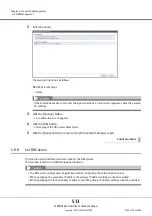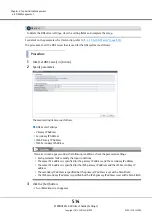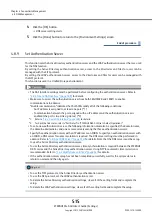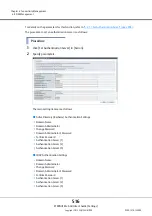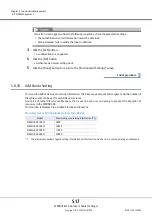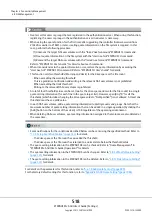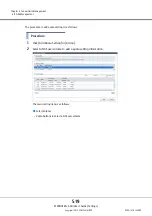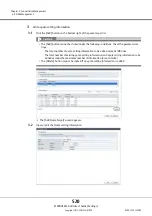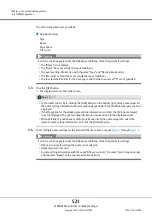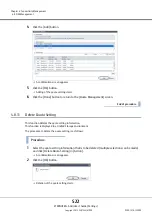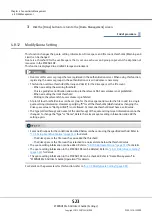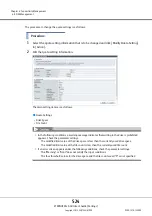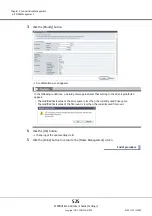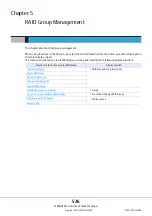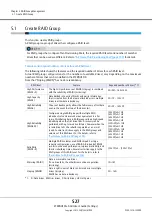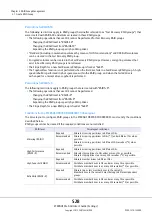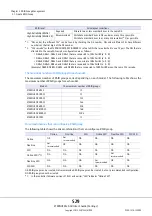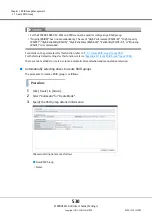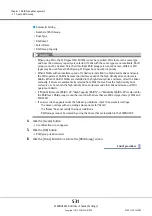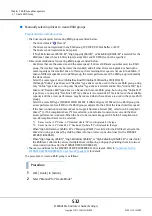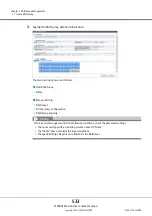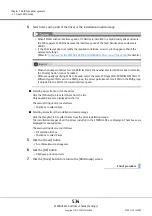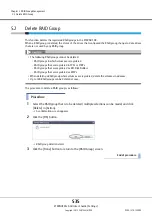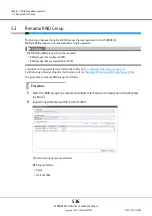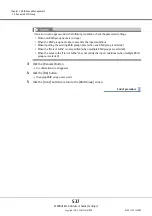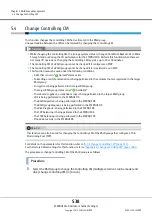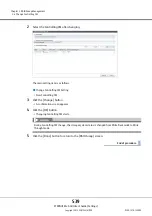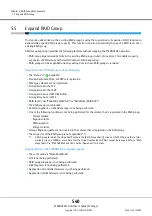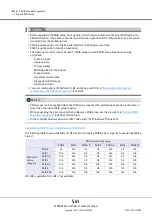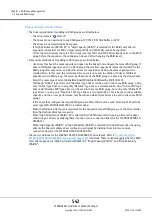
Chapter 5 RAID Group Management
5.1 Create RAID Group
ETERNUS Web GUI User’s Guide (Settings)
Copyright 2015 FUJITSU LIMITED
P2X0-1270-13ENZ0
527
5.1
Create RAID Group
This function creates RAID groups.
A RAID group is a group of drives that configure a RAID level.
Features and required number of drives for each RAID level
The following table shows the features and the required number of drives for each RAID level.
Actual RAID group configurations (or the number of available drives) vary depending on the maximum
number of drives that can be installed in the ETERNUS DX.
Note that "Striping (RAID0)" has no data redundancy.
*1: D: Data drives, M: Mirror drives, P: Parity drives, HS: Hot Spares
For RAID groups that configure Thin Provisioning Pools, the required RAID levels and number of member
drives that can be used are different. Refer to
"6.2 Create Thin Provisioning Pool" (page 559)
for details.
RAID level
Feature
Required number of drives (*1)
High Performance
(RAID1+0)
The high I/O performance of RAID0 (striping) is combined
with the reliability of RAID1 (mirroring).
2D+2M – 16D+16M
High Capacity
(RAID5)
Data divided into units of blocks and parity information
that is created from the data are allocated across multiple
drives to allow data redundancy.
2D+1P – 15D+1P
High Reliability
(RAID6)
The use of double parity allows the full recovery of lost data
even in the event that two of the drives fail.
3D+2P – 14D+2P
High Reliability
(RAID6-FR)
Configure a single RAID group with multiple RAID
redundant sets and reserved areas equivalent to a hot
spare. Distributing data in RAID groups allows high-speed
rebuilding when the first drive fails. A recovery can be
performed with up to two drive failures, however when the
second drive fails, the rebuild is operated at a normal
speed. Several restrictions apply to the RAID groups and
volumes of this RAID level. For the details, refer to
"Restrictions for RAID6-FR" (page 528)
.
(3D+2P)x2+1HS
(4D+2P)x2+1HS
(6D+2P)x2+1HS
(9D+2P)x2+1HS
(12D+2P)x2+1HS
(5D+2P)x4+1HS
(13D+2P)x2+1HS
(8D+2P)x3+1HS
(4D+2P)x5+1HS
(3D+2P)x6+1HS
Reliability
(RAID5+0)
Multiple RAID5 volumes are RAID0 striped. For large
capacity configurations, use of RAID5+0 instead of RAID5
results in enhanced performance, improved reliability, and
shorter rebuilding times. Several restrictions apply to the
RAID groups of this RAID level. For the details, refer to
"Restrictions for RAID5+0" (page 528)
.
(2D+1P)x2 – (15D+1P)x2
Mirroring (RAID1)
Data is mirrored to two drives.
If one drive fails, the other drive continues operation
(mirroring).
1D+1M
Striping (RAID0)
Data is split in unit of blocks and stored across multiple
drives (striping).
RAID0 has no data redundancy.
2D – 16D
Summary of Contents for Eternus DX200F
Page 2: ...This page is intentionally left blank ...
Page 1082: ......

